As a small business owner, there are many responsibilities that come with the title. You must be involved in—or at least fully aware of—everything from planning, human resources, customer service processes, marketing strategy, and much more.

One of the most critical aspects of small business ownership is accurate documentation of your finances. And when it comes to finances, keeping track of your assets in business is crucial. After all, you may be losing both time and money if you are not managing your assets correctly. “Know your numbers” is something Marcus always says, and it relates to your assets in business as much as anything else. This is because without knowing what these are and how they affect your business, you will never be able to get precise data to be able to make critical business decisions.
At this point, you may be thinking that you already do this. And many small business owners do keep impeccable records when it comes to their cash flow and inventory. But assets in business are much more than just the money in your cash register and the products on your shelf.

For example, did you know that if you deliver a package, but aren’t paid immediately for the delivery, the amount owed to you counts as an asset under accounts receivable? Many might count this as a debit until the money is secure in your account. But then that means that you are falsely doubling your company’s debt if you’re also tallying the merchandise that was delivered as a debit to your inventory. If this sounds a little complicated, do not worry. Before we go further into all the different types of assets and how to identify them, we will first tackle the basics.
What is an Asset?
According to Investopedia, assets in business are items of value owned by a company (Liberto, 2020.) They can be tangible items such as company vehicles, real estate, computers and equipment, office furniture, gondola shelving units, and other fixtures, or intangible things like intellectual property such as patents and registered processes. There are three fundamental properties that assets possess:
- Proprietorship: all assets in business are owned property that can be eventually turned into cash or cash equivalents, such as inventory or patents.
- Monetary value: all assets must have an economic value that can be monetized or sold. Assets must be appraisable and quantifiable.
- Resource: assets can also be used to generate financial benefits by selling them or converting them into something that can be sold – For example, raw materials (CFI, 2019).
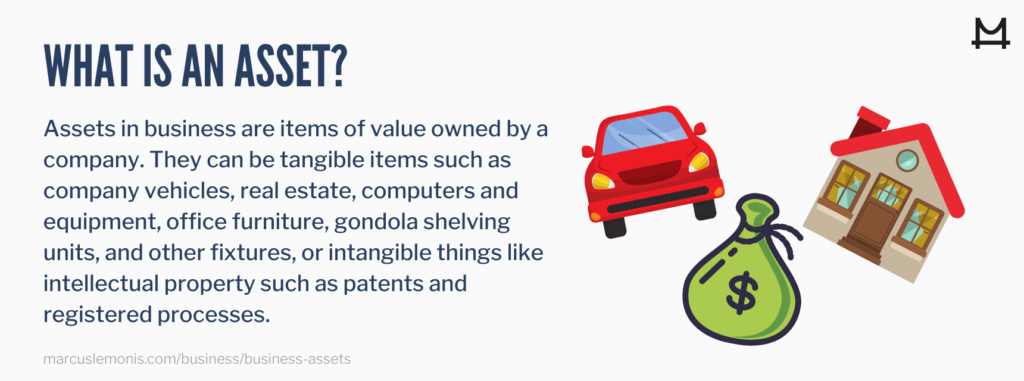
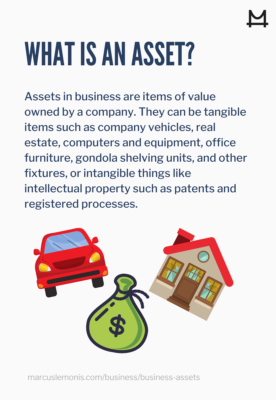
Types of Assets
Assets in business are separated on the balance sheet as current assets and noncurrent assets. Current assets in business are those that can be turned into cash within a year. Some examples of current assets are actual cash, inventory and, as mentioned previously, accounts receivables—debts owed to your company for goods or services that have been delivered or used but not yet paid for by customers.
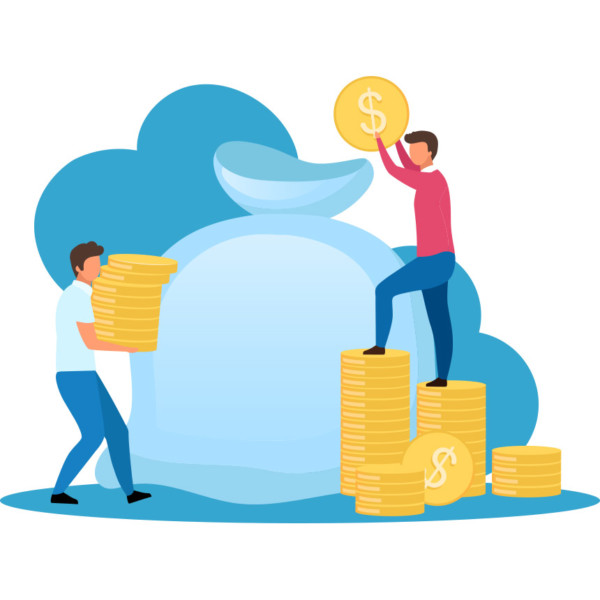
Noncurrent assets in business are your long-term assets. These are assets that are harder to turn into cash and are expected to provide value for more than a year. Noncurrent assets in business include items such as real estate, infrastructure, and equipment. This type of asset is usually referred to as “capitalized assets” since their cost is capitalized and expensed over the life of the asset in a process called depreciation (Liberto, 2020.) Depreciation is how your small business can account for the value of an asset over time, considering the life expectancy of the item.
Let’s take one of Marcus’ investments in South Florida that manufactures high-end furniture, as an example.
This family business makes quality custom pieces for interior designers and various lines of ready-to-ship pieces available for direct purchase. Its state-of-the-art manufacturing facility and all the industrial equipment and tools would be noncurrent assets. If you wanted to turn them into cash, it would require a lengthy process; and when the family invested in these things, they expected them to last for much more than a year. Current assets would be the raw materials—such as wood and fabrics—that will be turned into furniture, the finished pieces in the warehouse, and the invoices pending payment for furniture that has already been delivered to customers.
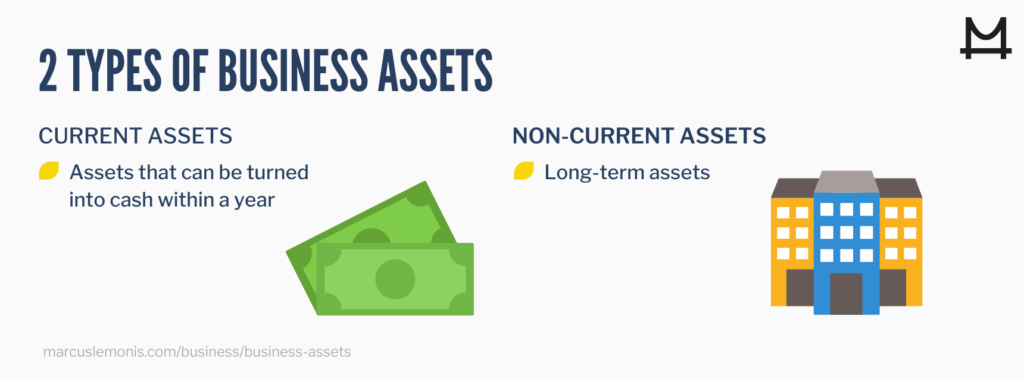
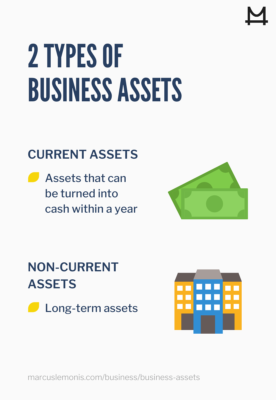
Identifying Your Assets
What are your business’s assets? To answer this question, you must determine your actual asset accounts. First, list everything your company owns; then separate the items on your list into current and noncurrent assets.
- Convertibility: you can classify your assets based on how easy it is to convert them into cash.
- Physical existence: classifying assets based on their physical existence as tangible or intangible assets.
- Usage: this category allows you to classify assets based on how they are utilized in your operation.
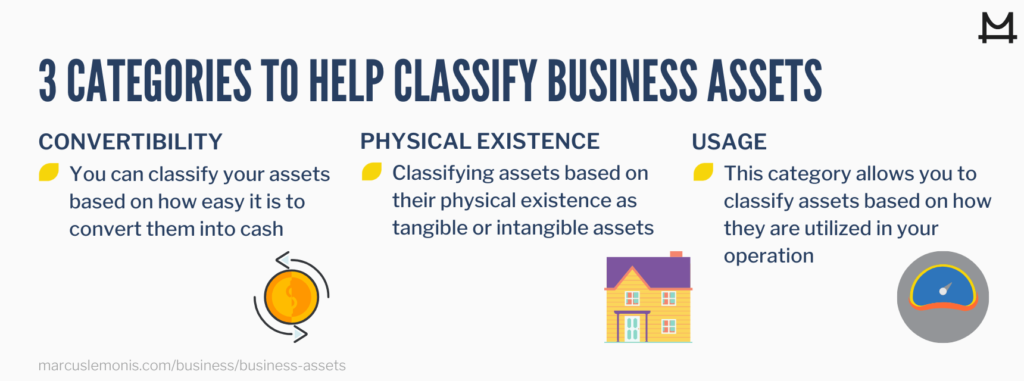
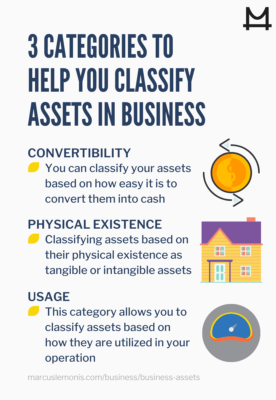
Classifying assets is vital to a business. These are some of the essential components in constructing financial statements, which you can use to evaluate your company’s performance. For example, understanding which assets are current assets and which are fixed assets is important in knowing the company’s net worth of working capital. In the scenario of a company in a high-risk industry, understanding which assets are tangible and intangible helps to assess its ability to quickly liquidate assets in case of necessity.
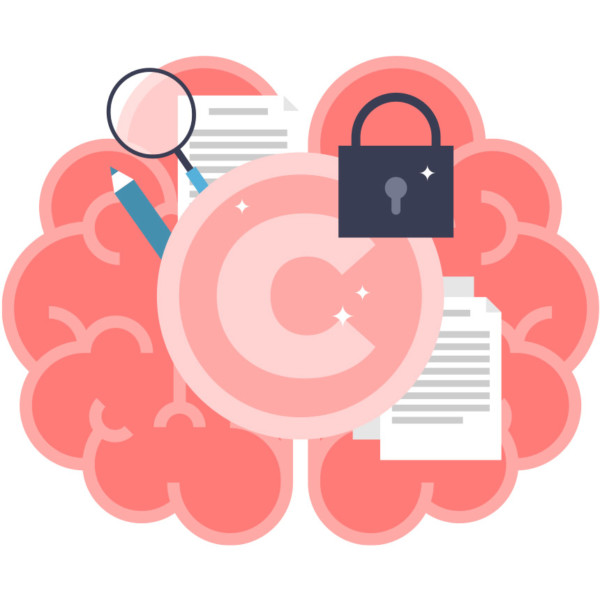
For example, in an industry like farming—which is extensively dependent on climatic conditions—knowing which assets could be converted to cash helps mitigate the risk of going under should an unexpected drought happen. Determining which assets are operating assets and which assets are non-operating assets will allow you to see how each asset affects your revenue and helps paint a detailed picture of where your company’s revenue is coming from.
In addition, the value placed on intangible assets, such as processes, knowledge, relationships, and intellectual property, should not be ignored.
Currently, intangible assets can be even more important than tangible property, especially when pricing your business for sale. An intangible asset that many tend to overlook when appraising their business’s assets is the value of their brand. A strong brand and a loyal customer base can be considered intangible assets in business as part of a company’s goodwill. Which, by definition, “is the value of the business in excess of its owner’s equity” (Entrepreneur, 2002.) Examples of this include a prime real estate location or your brand’s reputation. These are abstract things that bring value to your business—value that would still exist even if you were to sell the company to someone else.
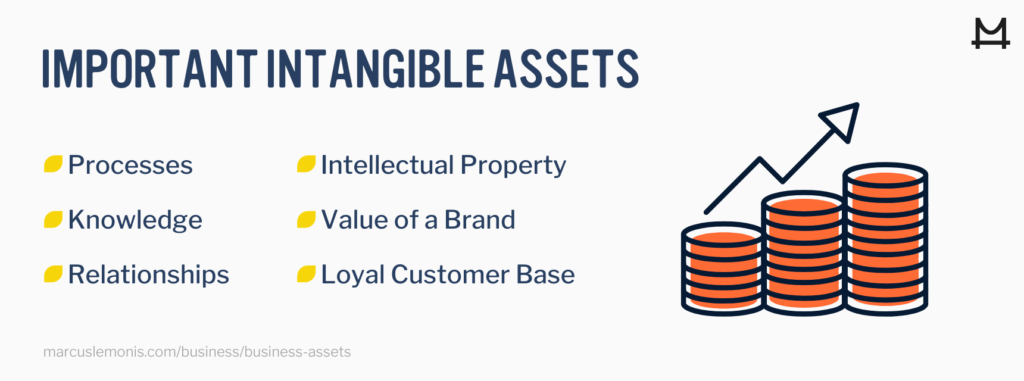
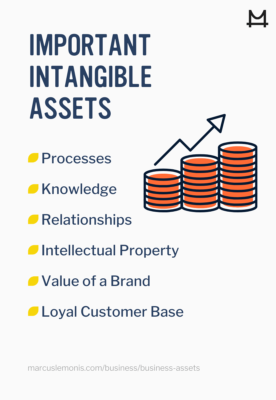
If this all sounds a little overwhelming, don’t worry. Remember what Marcus always says, “you don’t have to be a genius to run a successful small business, but you better be smart enough to be willing to learn.” There is a wide variety of tools, dedicated computer software, and apps that can help you manage your assets. Keep in mind that investing the necessary time and money to research and implement an asset management tool—that makes sense for your type of operation—will pay off in the long run. It will also be helpful to get your accountant involved to assist you in determining which tools may be best for your business’s bookkeeping and report-building.
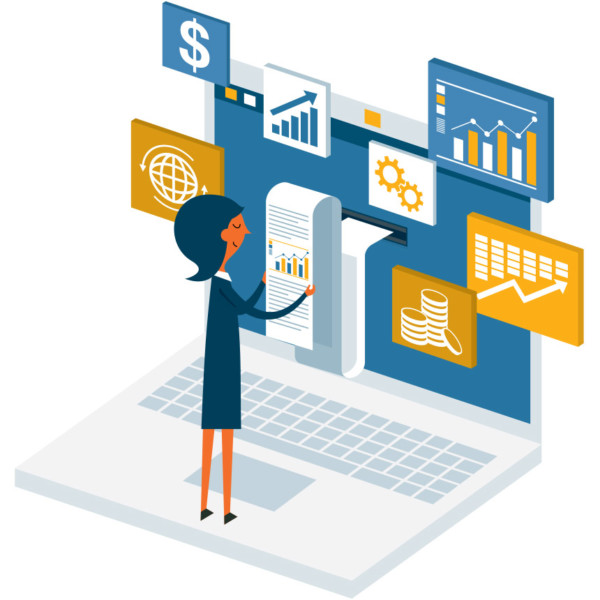
Ultimately, the reason for implementing new tools and technologies should always be to create efficiencies that will save you time and money—not make things more difficult for you and/or your accountant. Also, it is crucial to think about the future and how you envision your business growing in both the short run and your long-term goals. You should contemplate an asset management tool that is modular, or that allows for potential expansions, in order to keep up with your company’s demands to manage your assets as the operation grows.
So, what types of assets does your business have? If you have not yet done this exercise, it is imperative that you do it as soon as possible.
The longer you go without accurate data, the harder it will be to make the most informed decisions to benefit your business. Also, you could be missing out on potential growth opportunities through inefficiencies. And Marcus himself would tell you that, “more efficiency leads to more money, and more money leads to larger margins.”
- What types of assets does your business have?
- What assets does your business have?





